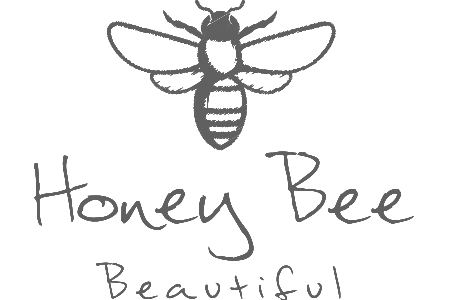
It’s great to take the chance to get out into the garden, from prepping our flower beds to pruning and preening our herb gardens, there’s a lot to maintain and prepare througout the year.
One of the most popular questions we get asked is how to encourage more bees to visit our gardens, and, we are more than happy to share our tips and advice this week. Whilst we do understand that it might not be possible to follow all of these tips in the current climate, we hope our advice can help you plan for the future of your garden and give you a better idea of how to build your bee friendly space!

Bees All Year Round
There are many species of bees in the UK from honeybees which live in large colonies of up to 50,000 needing substantial amounts of nectar and pollen, to solitary bees that literally live on their own to our fluffy bumblebees which live in very small colonies in tuffs of grass with only the queen surviving the winter through hibernation.
Many of us think that bees are only busy during the warmer months of spring and summer. However, bees are out and about from spring right through to winter so it’s important to think of plants and flowers that will provide our favourite friends with their necessary supplies all year round.
So, with that in mind, be mindful of planting ‘cold-weather’ plants and flowers in garden this season. Any flowers and plants with large amounts of natural pollen are going to be a good choice for your garden, particularly in spring when the pollen is used to feed the growing numbers of baby bees. Have a think about planting crocuses, sunflowers, bluebells and lavender. In spring, it’s good to opt for colourful and scented blooms as well, to help attract nearby bees to your garden.
In the cooler months, try to stick to the more ‘woolly’ and textured plants, allowing the bees to rest and easily maneuver around them. In autumn, plants such as dahlias, sedum and honeysuckle are useful and sturdy flowers to weather the changing temperature, whilst still keeping your bees happy and busy.
Whilst winter is always going to be a difficult month for both your garden and your bees, letting natural ivy, heather and snowdrops grow in your garden can still help to provide for your favourite insects.
If you have a larger garden have a think about planting shrubs and even trees. These can provide forage on a much larger scale helping our large colonies of honey bees. Trees such as apple, cherry, lime, eycalyptus, hazel and willow provide great food sources and heather, tree peony, st john’s wort and honeysuckle are great shrubs/bushes.
If you would to read more detailed recommendations for planting I would highly recommend ‘Planting for HoneyBees’ by Sarah Wyndham Lewis.

Create Resting Spots For Your Bees
If you truly want your bees to become a feature of your garden, it’s important to start providing for them - even when the weather isn’t great. This could mean setting up resting spots or ‘bee hotels’ for them to take shelter in, even if just in a sturdy log pile or stack of porous wood. This can encourage bees to start breeding there too, laying their eggs near a reliable food supply from the plants in your garden.
Make sure that your bee hotel faces the sun where possible, and is left undisturbed - allowing the young bees to thrive and grow before pollination begins.
You can also create a few watering stations. Bees prefer to land on something to collect water so boggy moss areas or water bowls full of corks or stones gives them something to land on.

Think Outside Of The Box
In reality, bees are far more attracted to native wild plants found in the British countryside, fruits and vegetables, herbs and ‘weeds’ rather than ‘garden-centre’ flowers.
They have ultra-violent vision so are far more attracted to blue and purple flowers rather than reds and they favour single headed flowers which are not too deep so that they can reach their tongue in and collect the nectar. Single flowers are better than doubles so, one row of petals only and not masses of frufru. When it comes to Dahlias and cherry trees a single flower is more beneficial to bees.
Why not try growing your own lavender and rosemary this summer? Or invest in a miniature vegetable patch and start living off your own produce - not only is this a sustainable hobby to pick up, but it also helps your garden to become better equipped for your bees plus the bees will help pollinate your fruit and veg providing you with a hearty crop of home grown organic goodies.

Allow Your Weeds to Grow
For many of us, weeds are the bane of our gardens. No matter how many hours we spend removing them, they always seem to grow back again the very next season. So instead of fighting this losing battle every year, why not allow or encourage the weeds and ‘native’ wildflowers to bloom in your garden?
Climbing ivy, dandelions, daisies and lawn clovers create easy landing spots for your bees, and can encourage frequent visits all year round.
If you do choose to continue weeding, we recommend avoiding highly chemical weed killers as these can be especially harmful to the natural wildlife in your garden.
We love watching the bees in our garden, and we know that you do too. If you have any more questions about how to encourage the wildlife in your garden this season, or about the skincare products we recommend to take care of your garden-weary hands, send us a message and we’ll do our best to help.


How to treat your hands after your gardening sessions
It is not only recent events that cause havoc with our hands, gardening will always give them a good run for their money too.
To help clean, soften and repair your skin after a hard session in the garden, why not have try our Garden Bee Hand & Foot Scrub which acts as a natural swarfega gently removing mud, dirt and rough skin with olive oil infused himalayan pink salts and uplifting scents of rosemary and lemon to revive and refresh. Follow this with smidge of our Garden Bee Universal Balm which will soothe and repair dry, cracked skin on hands and feet with raw honey, pure beeswax and propolis and say a thank you to the bees for what they provide.
We hope you are now inspired to plant for bees this year!


Leave a comment